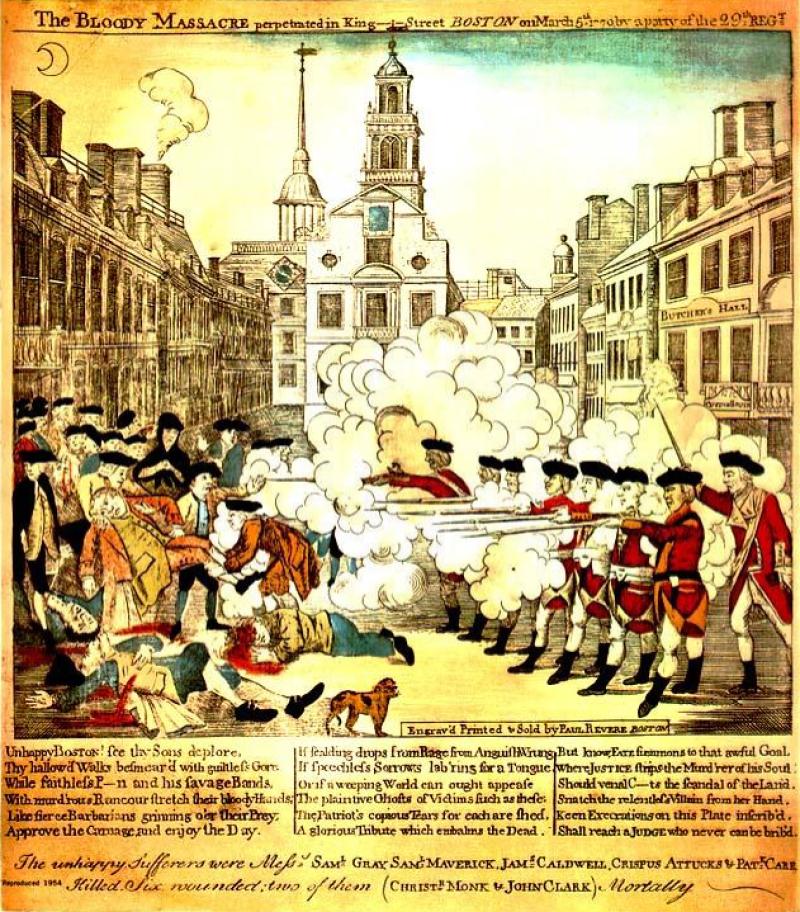The Boston Massacre
Lesson Plan

Grade Level:
4th Grade
Estimated duration of lesson:
Two 50-minute class periods
Content standards:
New Fourth Grade Standards-History Strand
2. Primary and secondary sources can be used to create historical narratives.
4. The 13 colonies came together around a common cause of liberty and justice, uniting to fight for independence during the American Revolution and to form a new nation.
Primary Sources:
1.
File
2.
A summary of the lesson:
Students will compare and contrast two artistic images of the Boston Massacre. They will use their observations to conclude which image portrays the event more accurately.
Instructional Steps:
Day 1- The class will read about and discuss the Boston Massacre from their textbook. After discussing the events that occurred at the Boston Massacre I will ask if anyone knows who Paul Revere was? A few will be able to tell me that he rode through town saying, "The British are coming!" Then discuss whether Revere would be considered a patriot or loyalist. Tell students a little background knowledge about Paul Revere’s job as a silversmith. Then display Revere’s engraving of the Boston Massacre and distribute page 1 of to students. They will work through the worksheet with a partner. Once everyone is done, discuss what each group came up with.
Day 2- Display Bufford’s image on the Smartboard and distribute page 2 of . Students will again work with a partner to complete worksheet. Once everyone is done, the worksheet will be discussed. Students will be told to study these worksheets and use them to consider the following question. What image do you feel more accurately portrays the events of the Boston Massacre?
Worksheets:
Image Analysis Worksheet
Post-assessment:
Boston Massacre Image Comparisons
Materials needed by teacher:
- Smartboard
- Images of Revere’s and Bufford’s work
- Worksheets
- textbook
Materials needed by students:
pencil
